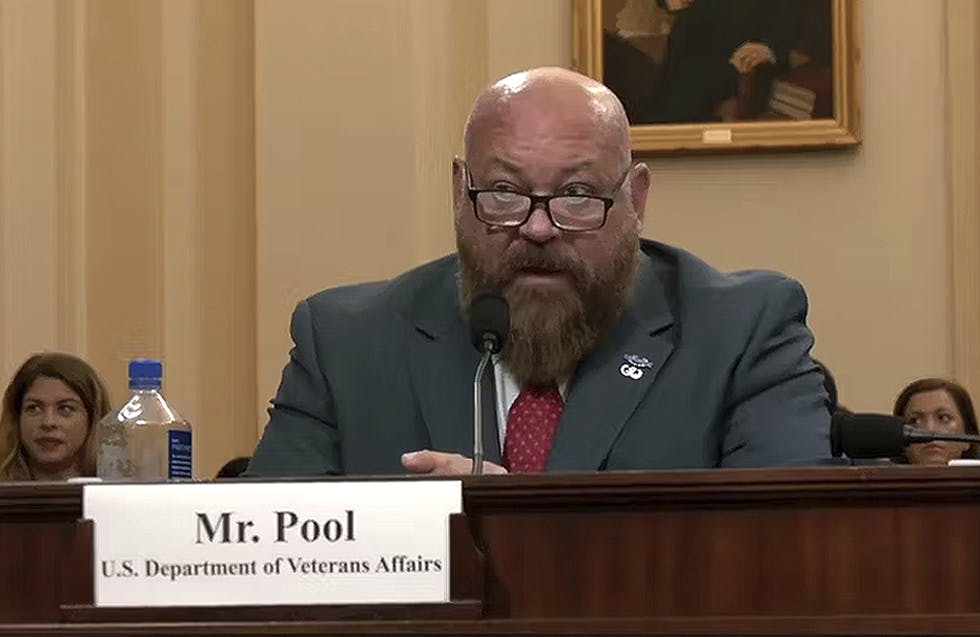What is CMMC, and How Does it Impact Federal Contracting?
The system will ensure defense companies implement appropriate cybersecurity practices and processes.

The Defense Department’s Cybersecurity Maturity Model Certification (CMMC) is a multi-level cybersecurity certification system for contractors doing business with the federal government. CMMC codifies cybersecurity practices to ensure an engaged culture of cybersecurity throughout a contractor’s supply chain.
DOD first launched the standard Jan. 31, 2020, and its acquisition and sustainment CISO, Katie Arrington, has been spearheading the effort.
According to the General Services Administration, the system “establishes and verifies that companies within the Defense Industrial Base (DIB) are implementing cybersecurity measures to protect Federal Contract Information (FCI) and Controlled Unclassified Information (CUI) within their unclassified networks.”
There are five levels to CMMC: the first level requires basic cyber hygiene practices, the second level requires documentation of these practices, the third level requires a top-down plan for implementing and demonstrating these practices, the fourth level requires regular reviews of these practices to ensure compliance and effectiveness, and the fifth level requires standardization and optimization of best cybersecurity practices across the organization.
Contractors must pay for a third-party assessment in order to achieve each level of CMMC.
DOD approved the first third-party assessor for CMMC accreditation, Redspin, June 9. It also approved Kratos Defense and Security Solutions as a third-party CMMC assessor June 16.
By fiscal year 2025, the agency said it is targeting 475 prime acquisitions that include CMMC requirements.
What does this mean for contractors?
By 2026, every contractor with the federal government will need to have at least CMMC Level 1. Until then, only DOD contractors will need to have CMMC Level 1, 2 or 3, depending on the contract. There are currently seven DOD contracts requiring some level of CMMC, and GSA included CMMC language in two of its upcoming contracts: STARS III and Polaris.
What is the industry perspective on CMMC?
Industry views on CMMC are mixed. While cyber experts and contractors acknowledge the need for standardized cybersecurity requirements, many are concerned about the accelerated timeline for implementation and assessment costs. Some members of the industry say DOD has not given clear communication or direction regarding the CMMC rollout.
During a June 24 hearing with the House Committee on Small Businesses, some small business representatives expressed concerns over CMMC assessment costs. Some worry that larger contractors with bigger budgets will edge out smaller companies that can’t afford CMMC assessment.
“An additional mechanism that would ensure more effective implementation is to allow companies to have a Plan of Action and Milestones (POA&M) after a CMMC assessment,” Michael Dunbar, a small business executive testifying on behalf of the HUBZone Contractors National Council, told the committee. “Currently, CMMC certification is an all or nothing process — if an assessor determines your company is at a Level 2 because of only a few factors, there is no way to make the necessary changes and achieve a Level 3 certification. Further, there is no dispute mechanism for companies to challenge a given certification level. This is problematic because assessments are subjective, and companies should have the ability to use a resolution process to settle CMMC assessment disputes, especially small businesses.”
Seth Storie, a Quality Assurance Manager with ArdentMC, a small IT contractor with Amazon Web Services (AWS), said the first level of CMMC involves “basic” cybersecurity measures that everyone should be doing regardless of DOD’s requirements.
“They’re really simple and for the most part there’s really nothing in there that’s a heavy lift for a company to comply — these are things that are the bare minimum,” he said in a CyberCast interview with GovernmentCIO Media & Research.
While Storie agrees with the reasoning and the “spirit” of CMMC, he worries how his company will handle the timelines for certification.
“From a small business standpoint, looking at some of the investments, we really have to think hard about what level we wish to attain and the contracts associated with it,” he said. “There’s almost a bit of a catch-22 because there’s a significant enough investment that you really have to have a contract lined up that you’re going to go after for it to be worthwhile, but then the other side of that is, at that point you’re almost too late, it takes too long to get certified, so because right now the CMMC Accreditation Board is talking about a six-month window between seeking certification and being certified so that’s what’s definitely a concern.”
From DOD’s perspective, “the costs associated with implementing CMMC requirements, supporting the CMMC assessment, and contracting with the C3PAO will be considered an allowed cost,” according to a page on the Office of the Under Secretary of Defense for Acquisition and Sustainment’s website.
This is a carousel with manually rotating slides. Use Next and Previous buttons to navigate or jump to a slide with the slide dots
-

VA CIO Targets Modern IT and Smarter Workforce Alignment
Agency leaders told lawmakers they are focused on trimming legacy systems and restructuring its workforce to streamline operations.
3m read -

Pentagon's $200M AI Contracts Signal Broader Effort to Transform Talent
The Army is leveraging Silicon Valley, reservist programs and new hiring strategies to integrate critical digital skills in its ranks.
5m read -

AI Foundations Driving Government Efficiency
Federal agencies are modernizing systems, managing risk and building trust to scale responsible AI and drive government efficiency.
43m watch -

Inside DOD’s Push to Grow the Cyber Workforce Through Academia
Diba Hadi gives her first interview since becoming principal director of the DOD’s Cyber Academic Engagement Office.
15m listen -

Agencies Tackle Infrastructure Challenges to Drive AI Adoption
Federal agencies are rethinking data strategies and IT modernization to drive mission impact and operational efficiency as new presidential directives guide next steps.
5m read Partner Content -

Generative AI Demands Federal Workforce Readiness, Officials Say
NASA and DOI outline new generative AI use cases and stress that successful AI adoption depends on strong change management.
6m read -

The Next AI Wave Requires Stronger Cyber Defenses, Data Management
IT officials warn of new vulnerabilities posed by AI as agencies continue to leverage the tech to boost operational efficiency.
5m read -

Federal CIOs Push for ROI-Focused Modernization to Advance Mission Goals
CIOs focus on return on investment, data governance and application modernization to drive mission outcomes as agencies adopt new tech tools.
4m read -

Fed Efficiency Drive Includes Code-Sharing Law, Metahumans
By reusing existing code instead of rewriting it, agencies could dramatically cut costs under the soon-to-be-enacted SHARE IT Act.
5m read -

Agencies Push Data-Driven Acquisition Reforms to Boost Efficiency
New initiatives aim to increase visibility of agency spending, improve data quality and create avenues to deploy solutions across government.
5m read -

Data Transparency Essential to Government Reform, Rep. Sessions Says
Co-Chair of the Congressional DOGE Caucus Rep. Pete Sessions calls for data sharing and partnerships to reduce waste and improve efficiency.
5m read -

DOD Turns to Skills-Based Hiring to Build Next-Gen Cyber Workforce
Mark Gorak discusses DOD’s efforts to build a diverse cyber workforce, including skills-based hiring and partnerships with over 480 schools.
20m listen
















